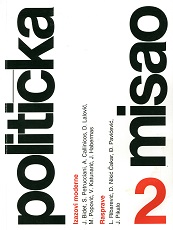Femme fatale s petero djece. Analiza osnovnoškolskih udžbenika povijesti iz rodne perspektive
FEMME FATALE WITH FIVE CHILDREN. AN ANALYSIS OF PRIMARY SCHOOL HISTORY TEXTBOOKS FROM THE GENDER PERSPECTIVE
Author(s): Đurđa KneževićSubject(s): Gender Studies
Published by: Fakultet političkih znanosti u Zagrebu
Keywords: stereotypes; gender; equality of the sexes; discrimination; education
Summary/Abstract: This analysis of textbooks and working material is based on documents determining the curriculum standards and plans and the programme for primary schools of the Ministry of science, education and sport, as well as the UN conventions regarding the abolishment of all forms of discrimination of women. Covered by the analysis are the textbooks approved by the Ministry of science, education and sport. As focal points of the paper’s subject matter and the centres of analysis, six aspects have been singled out: 1) contextualisation of women (individually or as social groups) in the thematic (textbook) framework, integration into the contents or mere addition of separate parts to the textbook whole, 2) lack of specific material pertaining to the equality of the sexes, 3) so-called women contents or subjects (housekeeping, female beauty, fashion), 4) wives, widows, mothers, sisters... of illustrious husbands, sons, brothers, 5) important women – inclusion or ignoring of eminent women – rulers, scientists, artists, 6) successful examples – entire textbooks or some individual solutions. The analysis shows that only a small part of the textbooks and working material successfully integrates contents relating to women in such a way as to portray them uninfluenced by stereotypes. Further, the textbook authors had major problems with incorporating material dealing with women into historical events as a whole. Women and their activities, even the ones perceived as “male”, as still merely added to history. Neglect or complete absence of certain great historical subjects has also been noted, e.g. of matriarchate/matrilineality and the subsequent development of the patriarchate. All authors found it much easier to portray women separately, either individually or as social groups, though the latter has, in general, been less successful than the former (important women, rulers, scientists, artists). Their position in various times is almost without exception described by the phrase “women remain at home, they cook, they look after the children, they have no rights...” with some variations in detail, but not in the essentials.
Journal: Politička Misao
- Issue Year: XLIX/2012
- Issue No: 02
- Page Range: 73-96
- Page Count: 24
- Language: Croatian

